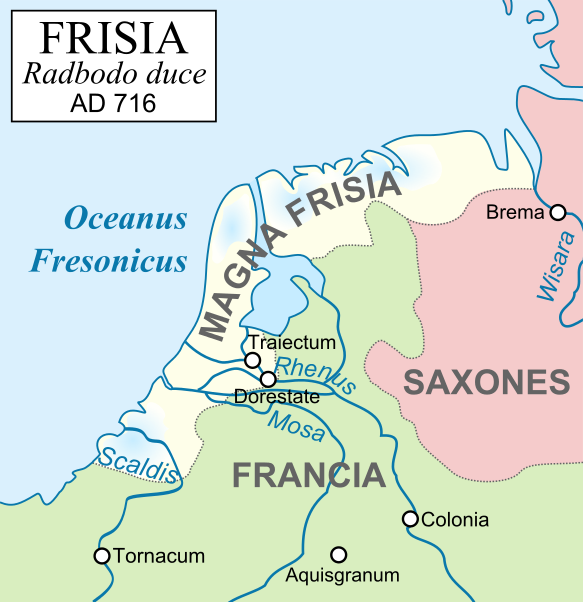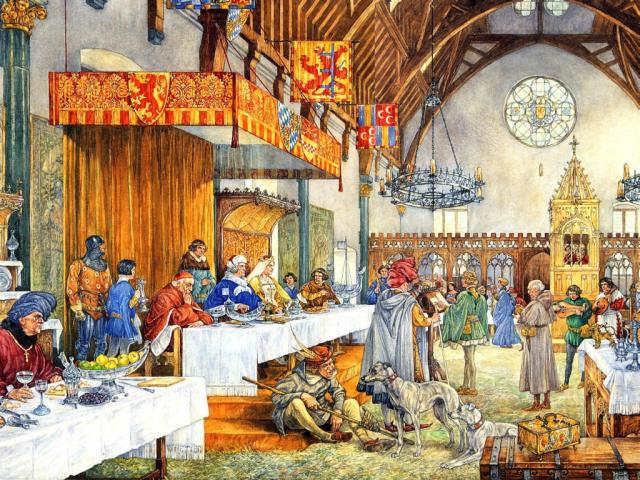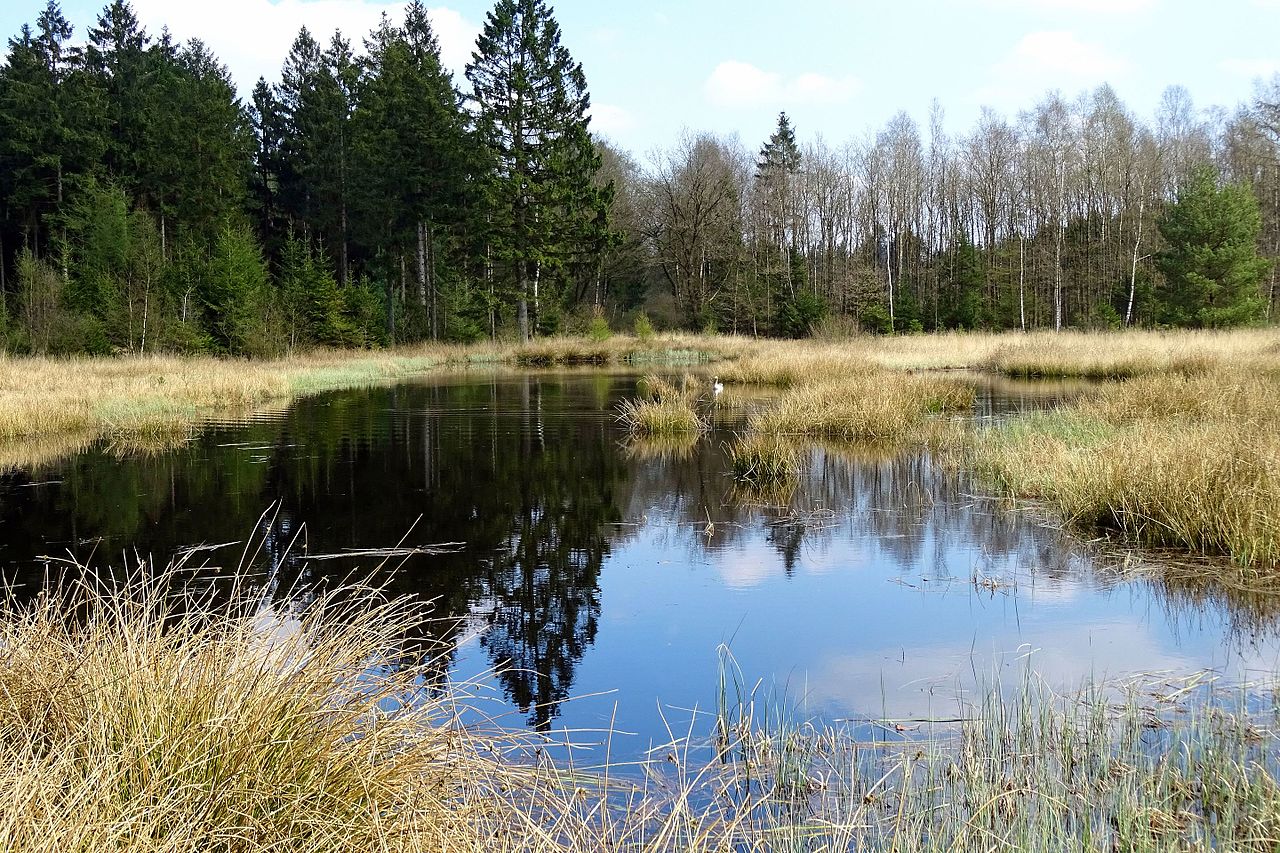This is not a Post Mortem. In my spare time, I design and develop my personal card game project called Alderthe. That’s why I’m calling this series of articles a Vivisection: cutting into a living organism to see how (well) it functions.

In this first entry of the series, I’m going to give some background concerning the setting. It has very little to do with the game mechanics or any of the design, but I suppose it does serve as some context for the rest of the series. For those among you who appreciate mythology or fantasy lore, you may find it interesting. Just don’t expect any strong narrative design insights from this text.
Origin
I started building the world of Alderthe in my teens. Because of that, the world is inherently flawed. I slew a darling or two, revived another, cut off its head and limbs, stitched several donor body parts onto it, and so on… so it’s become quite the mess.
I once dreamed of using this world to create a collection of stories. Much like Tolkien wanted his Middle-Earth to be a mythology for England, whose people did not possess a proper mythology, I wanted to create one for The Netherlands. The Dutch have some scattered folk stories (actually quite a lot, if obscure), but lack a tradition of myths and legends similar to what the Norse, Celts, Romans, or even the German(ic)s produced. I once heard someone say that the Dutch countryside was far too flat, so that its people could see everything in plain sight and therefore lose all lust for fantasy and imagination.

However, I grew up in the peat district. For thousands of years, these lands were marked with fens and bogs, exactly like the picture in the header of this article. Take a wrong path as you travel to a neighbouring village, and you might drown in a concealed puddle. Bog lights (burning methane gas that rose from the bog) led people astray, mistaking the glow for another traveller or a place of safety. This land could tell stories, stories of my design.
According to my vision, this world, in addition to being a world history through the eyes of the Late Classical/ Early Medieval Dutch (or to be more precise: The Frisians), would also be post-modern. Borders between stories would dissipate, fourth walls scaled, and the reader would be lied to or otherwise deceived. It was to elevate fantasy to Fantasy, bringing it up to speed with the rest of Literature in the process.

What, I suppose you were never young and naive?
Setting
The world of Alderthe (based on the Old-Frisian words for ‘old’ and ‘earth’), was created by a cosmic battle between the Force of Light and the Force of Dark. Darkness in the world of Alderthe is a counter-force to Light, not merely the absence of it. Alderthe was created in the chaotic maelstrom of cosmic energy in Light and Dark’s great struggle. With it, the four Major Gods of Fire, Water, Air and Earth were born. These Gods worked the barren Alderthe until it was stable, green, fertile, and teeming with life. The various interactions between the Major Gods yielded an additional nine Minor Gods.

At some point, both the Force of Light and the Force of Dark noticed Alderthe in the battles and visited it. Soon, they planted their agents on the surface. The People of Light were found by the four Major Gods, and the population divided itself among the four Gods. After many years, the People of Light had become the Men, Dwarves, Alvings and Eleverors (Dutch: Elfenaren); four distinct peoples and cultures.
The People of Dark were less fortunate. They were left to their own devises for some time. A few were later found by malignant Minor Gods and turned into their playthings. These became the Orcs and Kobolds. Others roamed the lands until a chance encounter with the Minor God of Thunder inspired them to do great deeds and grow strong. These became the Giants. The remainder of the People of Dark never found a patron God, and grew predatory, near animalistic. These became the Aughisk.
Novels
I started on two novels set in the Alderthe setting and planned a third book. One was to be the collection of creation stories and the activities of the Gods. A Genesis of Alderthe. This one is pretty much finished.
The second one was a transcription of a travel report, as relayed by a geriatric man who claimed to be a thirty-something merchant who had an encounter with a mythical and long-deceased Dwarven king in a mysterious inn. It’s a frame story, containing five shorter stories told to the merchant by the Dwarven king relating the folklore of Alderthe. These stories would help the merchant grow into a better person, but also would aid the rest of his journey after the encounter at the inn, and relay important information to the Dwarves living in the settlement that was the merchant’s destination. I selected typical or medieval Dutch words and built stories around them. The novel’s title was De Sprookspreker, a word that has no translation but is a type of minstrel or storyteller.

The third one would then be a fellowship journal of the aforementioned returned legendary Dwarven King’s party. I intended it to contain only round characters: by giving every fellowship member complexity, a character arc, journey, success and failures, I wanted to omit flat characters. Also, one of the travellers is a traitor, and it was up to the reader to decide their identity.
The second novel won me a spot in the Masterclass given by award-winning author Annejet van der Zijl during her writer residency at the University of Groningen. I was runner-up during the friendly contest (but did get an honourable mention). I kept working on the novel after the Masterclass, until I got involved in the games industry.
That’s when I abandoned the world of Literature to fully focus on this game writing venture.
Turning Point
I began writing down some ideas for a strategy game in my mid-teens. Very rough ideas, based on some of the digital and board games that I played at the time (Age of Wonders, Heroes of Might and Magic III, Stratego Legends). I inserted the peoples of Alderthe into these concepts, which never became more than endless lists of factions and units. I never got around to designing any game mechanics, because I had no idea how to.

Cut to fifteen years later, and I have picked up little bits of knowledge on how to approach game design. The idea of the game stayed with me through the years. So finally, after fiddling around in Game Maker in December 2017 for a bit as I worked on a different prototype, I decided to just… start on the board game.
I collected all the thoughts, ideas and concepts that I accumulated over the years, tossed about 95% of them in the trash, and just began to work on a couple of core mechanics and USPs.
My core concepts were:
- Map: there had to be a map/battlefield on which units could move, and regions to occupy;
- Unit spawning: units are brought into the game using a currency that (some) units help generate;
- Abilities: units diversify through their varied access to abilities;
- Levelling: units can accumulate experience points, growing strong in health and attack, and gain access to new abilities as units progress;
- Team based: matches can be played as 1v1, 2v2, 3v3, and so on, with Light factions playing against Dark factions;
- Deck building: players should be able to compose their deck before the game, using one of the Light/Dark factions as a basis and add other, minor factions to that. This would allow strategy, depth, and replayability.
My biggest concerns were:
- How am I going to represent units?
- How am I going to keep track of hit points, experience points and status effects?
- What are the victory conditions?
Prototype 0
I experimented with tiles for the map. I preferred not to use hexagons. Too obvious. I went through a few cycles of iteration before I landed on triangles, and how to organise them. Is it perfect? I doubt it. Is it fun? Well, it’s original. Does it yield me the desired effect? Mostly.

Check, good enough.
I began to work on unit cards. I figured a card would allow me to print sufficient information on them, and I could use various tokens to communicate whatever data or effects remained.

I then began to design units. What quantifiable stats should they have? I figured units needed:
- Name
- Faction marker
- Level
- Cost
- Attack stat
- Defence stat
- Hit Points
- Experience counter
- Abilities (for both current and future levels)
- Status effects
- Card art
You can’t fit all of that on one card and manage a war game, I soon discovered.
So, I just… made a couple of units. Any units would do. When it’s time to fill in the numbers for the stats, it’s decision time. So that’s what I did, just to see where I’d end up.
At that point, the first parts were in place. I felt there were some fun parts to the concept. It was time to build a playable prototype. I began to work on Prototype 1. You can read all about my findings in the next post in this series.
Banner picture: Fen in Gasselterveeld by Gouwenaar


It’s so great to see how much you think about every aspect. When I drop by your playtesting I notice it’s quite the bumpy ride but I now figure that’s to be expected of a project this size.
What really stands out for me in this article is the part where you write “Is it fun? Well, it’s original.” On the one hand it fits the rest of the article well; it’s your world, your game, and that’s really intriguing because on the other hand the originality has a higher priority than fun, which seems a bit odd to me as a game designer. Although I do get why you’d make a board game instead of programming all those stats…
Anyway, keep it up! Excited for the next parts!
Thanks for your response, BoterJan!
It is indeed a very bumpy ride, but that is exactly my intent with this project. Since there is no real investment at stake (other than my time and sanity), I desire a difficult journey as it teaches me a lot about design, setbacks, tweaks, and expectations.
Good catch regarding the originality vs fun comment! I wonder if there is a ‘fun’ option for a map. Do you think there is one? If so, what qualities determine its fun-factor?
I avoided the hexagon shape, since they are used everywhere (and for good reason). I didn’t like a square option; Stratego Legends used that, and its movement options felt constraining to me. I thought the idea of triangular tiles to be very eye-catching, so I’m curious to see how useful they prove to be. This shape has its own limitations, as I am now beginning to understand as prototype 2 proves the need for a new iteration soon.
Sneak peek for things to come: I am contemplating other shapes again, and I’ve fallen in love with how pentagons create little lanes like this: https://gyazo.com/a1ce7c4af410a300281968178ab79234
I am tempted to experiment with that map shape next.The lanes would make it almost MOBA-like.
I would love for you to test the game some time. I’d like you to join in a group game in particular, likely a 2v2 setup, given your experience and expertise in local multiplayer games.
In any case, thanks for your feedback and for taking the time to respond! I appreciate it!
Vivisection #2 will need some time before publication, but it’s coming – and it’ll be more game designy too!
I think when it comes to grids for a map, you should be able to instantly see where you can move. A square grid is clear because every tile has four sides to move to. A hexagonal grid has six but your actual game tiles are more trapezoids than triangles; I’m not sure if I can also cross the corners on your image, moving from the left-most B to the B next to it, for example.
You could try making it super obvious with lines and arrows like Arkham Horror does (http://www.thedorkden.com/blog%20picutres/arkham%20horro.jpeg) but I think you’re on a really interesting track. Pentagons can get you a nice balance of an original and fun map. Your image clearly shows the tiles you can reach. While you’re thinking about new tiles: I think you can also use the colors of the tiles to clear things up.
I’d love to play the game sometime if you think I can help 🙂